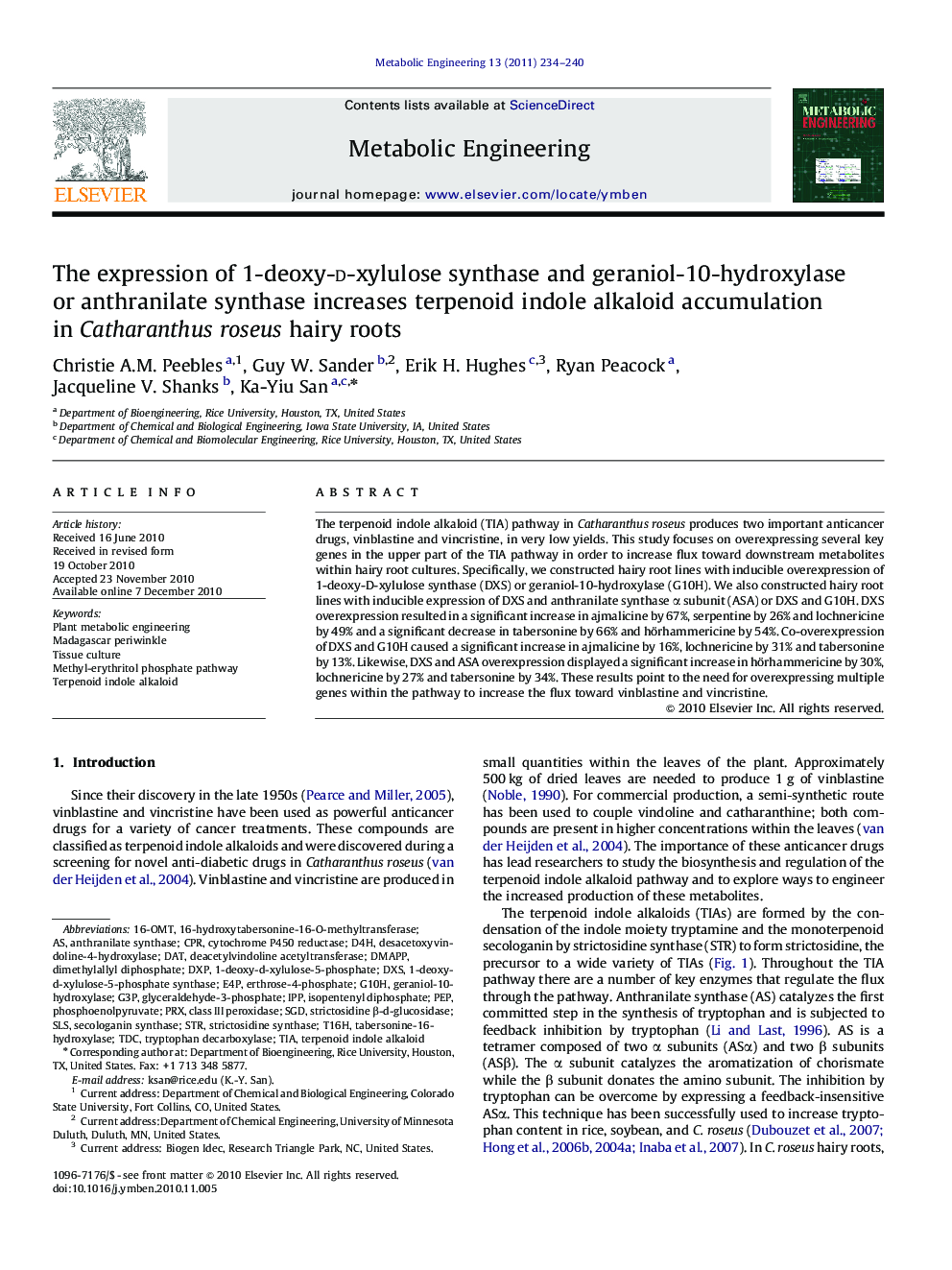| Article ID | Journal | Published Year | Pages | File Type |
|---|---|---|---|---|
| 31752 | Metabolic Engineering | 2011 | 7 Pages |
The terpenoid indole alkaloid (TIA) pathway in Catharanthus roseus produces two important anticancer drugs, vinblastine and vincristine, in very low yields. This study focuses on overexpressing several key genes in the upper part of the TIA pathway in order to increase flux toward downstream metabolites within hairy root cultures. Specifically, we constructed hairy root lines with inducible overexpression of 1-deoxy-D-xylulose synthase (DXS) or geraniol-10-hydroxylase (G10H). We also constructed hairy root lines with inducible expression of DXS and anthranilate synthase α subunit (ASA) or DXS and G10H. DXS overexpression resulted in a significant increase in ajmalicine by 67%, serpentine by 26% and lochnericine by 49% and a significant decrease in tabersonine by 66% and hörhammericine by 54%. Co-overexpression of DXS and G10H caused a significant increase in ajmalicine by 16%, lochnericine by 31% and tabersonine by 13%. Likewise, DXS and ASA overexpression displayed a significant increase in hörhammericine by 30%, lochnericine by 27% and tabersonine by 34%. These results point to the need for overexpressing multiple genes within the pathway to increase the flux toward vinblastine and vincristine.
